This is a guest post by Holly, a school-based SLP, all about planning evidence-based interventions for speech-language therapy.
Planning Evidence-Based Treatment Plans in Speech Therapy
During my first year as a school-based SLP, I was just trying to keep my head above water. I was taking my therapy sessions day-by-day, treading IEP deadlines, and trying not to drown in paperwork. I felt like I was managing, but I imagine I was really just treading water.
With spur-of-the-moment therapy plans, it seemed like I was starting from scratch every day. Plus, if I’m being honest, seeking out EBP- aligned intervention wasn’t a high priority. I just graduated — surely my training was fresh and comprehensive enough to help me serve my caseload of elementary through high school students, right? It turned out, I had a lot of digging to do… which led me to find resources from SLP Now!
If you’ve been tuning into these blog posts and podcasts for a while, you’ve probably heard the SLP Now team talk about the power of planning (here’s a flashback to our Therapy Planning Bootcamp) and the merits of evidence-based intervention (here’s our current podcast series on EBP). That’s because these habits and processes are ways we can #WorkSmarterNotHarder.
No surprise here: the things we think we don’t have time for often end up being the things that save us the most time.
When we reframe evidence-based practice as a process that is embedded into our clinical decision-making (rather than a stack of dusty journal articles you’ve been meaning to get to), it makes a lot of sense to use a plan in therapy.

In this EBP process, once we’ve asked our clinical question and gathered/assessed the evidence, we can develop a plan that goes hand-in-hand with our clinical decisions (source: ASHA, accessed 2021).
Based on this framework, I’ll be outlining the workflow that I use for decision making and planning. Once I have gathered evidence-based approaches for treatment, there are some things I do in order to connect the dots between the evidence and actionable therapy plans. With some of these tips and tools, I hope you’ll notice a difference in your work and your students’ communication outcomes!
Step 1: Compile your sources for decision-making.
What kind of internal/external evidence and family values will you reference when planning your therapy sessions?
Here are just a few examples of how I might gather my sources:
Types of Sources
Student assessment data
Family questionnaires
Student interviews
Journal articles
Therapy ideas on the web
ASHAPractice Portal
SLP Now Research Summaries
Organization Ideas
Physical folders for each student or binders for each therapy approach
Digital storage for documents or links (e.g., bookmark lists, Google Drive folders, Trello boards)
Family contact log (the SLP Now notes section is great for this!)
All of this information helps guide your treatment decisions by mapping out the rationale, benefits, and potential harms — plus it can also be shared with members of your IEP team or administration.
Step 2: Decide on your approach and methods of measuring communication objectives.
How are you going to implement and adapt a therapy approach for a student or group?
This is where I typically map out how an IEP goal will be targeted and monitored in the context of my therapy activities.
The SLP Now Paperwork Binder (included in the SLP Now Membership) is a gold-mine of resources — definitely check out the treatment plans across communication domains! Or check out our free treatment plan template to get you started!
Step 3: Outline your logistics.
Once the big picture is formed, it’s time to figure out the practical details.
This can include the topic/theme of activities, therapy planner for a given week or month, teaching visuals, therapy materials, and data-taking tools. There may also be other things to consider: school protocols, location of services, feasibility of implementation, therapy routines, etc. Lastly, it’s up to us to evaluate the effectiveness of our approach as we deliver services. This step of evidence-based practice is what sets us apart as clinicians!
Here’s an example of how I might use this workflow in my role as a school-based SLP.
Step 1: Compile Sources
I work with an autistic student in third grade (you’ll see identity-first language in this example — of course, use whatever terminology your student/family prefers). This student loves outer space, uses grammar/syntax effectively, and has strengths in vocabulary. The student exhibits some signs of hyperlexia and loves reading books aloud, but has trouble with comprehension. As a result, summarizing stories can be challenging. In conversation, their speech pattern is consistent with cluttering (quick rate of speech, collapsing of syllables/words, excessive revisions), plus they are having trouble navigating social situations with peers.
This student and their family are on board with a neurodiversity-affirming approach; based on our conversations, we will shift away from teaching social skills and masking, and move towards perspective taking, problem solving, and self-advocacy skills.
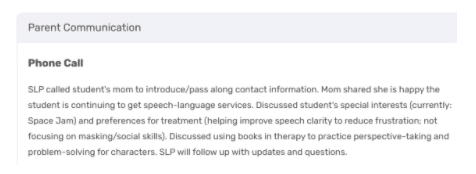
Sources: Family/student interview, baseline progress monitoring data and student ratings, ASHA Practice Portal page on Fluency Disorders and Spoken Language Disorders, the Therapist Neurodiversity Collective education page, “Systematic Individualized Narrative Language Intervention on the Personal Narratives of Children With Autism” (Peterson et al., 2014), and SLP Now’s Narrative Research Summary (Included in the SLP Now Membership).
Step 2: Decide on Approach/ Methods
I’ll use treatment plan templates from the SLP Now Paperwork Binder, especially the pages related to Stuttering, Language, and Autism/Social Communication.
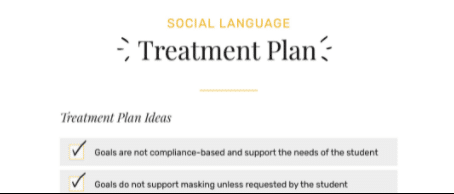
For the cluttering treatment approach, I’ve decided to explicitly teach strategies related to self-monitoring (rate, clarity of speech) and communication repair. For this goal, I’ll use student self-ratings to measure their awareness and speech satisfaction in structured conversation.
When using narratives to target story grammar elements, the student will focus on problems/actions/consequences and internal responses of characters throughout the story. I’ll measure the student’s progress by taking data on the student’s ability to retell a story with visual support, including these elements.
Per decision making with the IEP team (Brandel, 2020), the student will receive 45 minutes of direct therapy per week (a 30 minute small group session primarily using Literacy-Based Therapy, plus a 15 minute individual session to work on cluttering awareness and strategies).
Step 3: Outline Logistics
Topic/theme: My third graders are learning about the solar system in science, which pairs well with my student’s space interests! My library has a copy of “Mousetranaut” that I’ll be using in therapy.
Therapy activity planner (week/month at a glance): I love using the SLP Now One Page Literacy-Based Therapy Planner worksheet in order to set up plans based on a theme or book for multiple weeks at a time. If you’re using another approach, you can create your own outline for assessing, teaching and practicing skills.
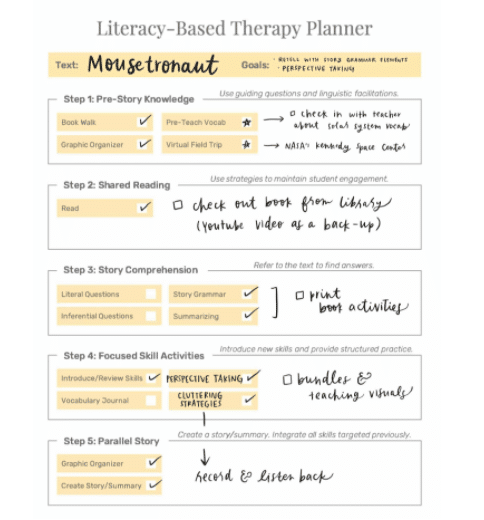
Prep your teaching visuals: I have a set of materials for supporting student narratives, including story grammar icons. For recognizing characters’ thoughts and feelings, SLP Now’s Perspective Taking Bundles are great to keep on hand. I also have a set of visuals to use as reminders for cluttering strategies. It can be helpful for my students when I keep these teaching tools consistent, even as my themes change throughout the year!
Gather materials: I’ll get a copy of the book and add Mousetronaut-themed materials to “My Materials” in SLP Now (book guide, book activity, no print activity, and smart deck). Think about how you’ll organize physical materials while you’re actively using them (here are more tips on Speech Room Organization!)
Set up your data collection tools: I take data on pen and paper, then plug it into my SLP Now planner to keep track of student progress over time. I also have a self-monitoring scale that the student can use throughout our activities.
Provide intervention → evaluate & adjust as needed: I’ll adjust the plan and task complexity to account for the student engagement/progress. I’ll also follow up the student’s teacher and family members to measure how these skills are carrying over beyond our sessions.

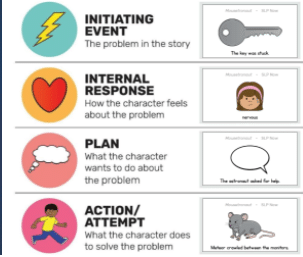
That’s a run-down of how I embed the process of evidence-based practice into my therapy plans! I normally think through Steps 1 & 2 near the beginning of the year, then I update Step 3 as we progress through different therapy activities/themes. It takes time up front, but using a long-term plan ends up saving so much time and stress compared to reinventing the wheel every morning.
What does your therapy planning look like? We’d love to hear what tools and strategies you use to set yourself up for success! Feel free to drop any questions you have below, too ⬇️
References
American Speech-Language-Hearing Association. (n.d.). EBP Process – Step 4: Make your clinical decision. Retrieved September 2021, from https://www.asha.org/research/ebp/make-your-clinical-decision/.
Brandel, J. (2020). SLP Service Delivery Decisions: How Are They Made?. Communication Disorders Quarterly, 1525740120951185.
Johnson, C. (2008). Evidence-based practice in 5 simple steps. Journal of Manipulative & Physiological Therapeutics, 31(3), 169-170.
Petersen, D. B., Brown, C. L., Ukrainetz, T. A., Wise, C., Spencer, T. D., & Zebre, J. (2014). Systematic individualized narrative language intervention on the personal narratives of children with autism. Language, Speech, and Hearing Services in Schools, 45(1), 67-86.
Ukrainetz, T. A., & Gillam, R. B. (2009). The expressive elaboration of imaginative narratives by children with specific language impairment.



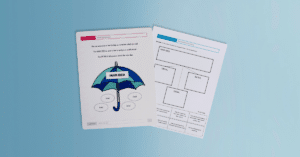
Reader Interactions